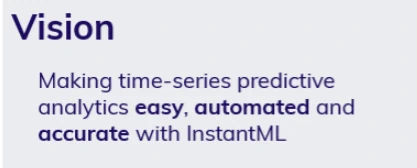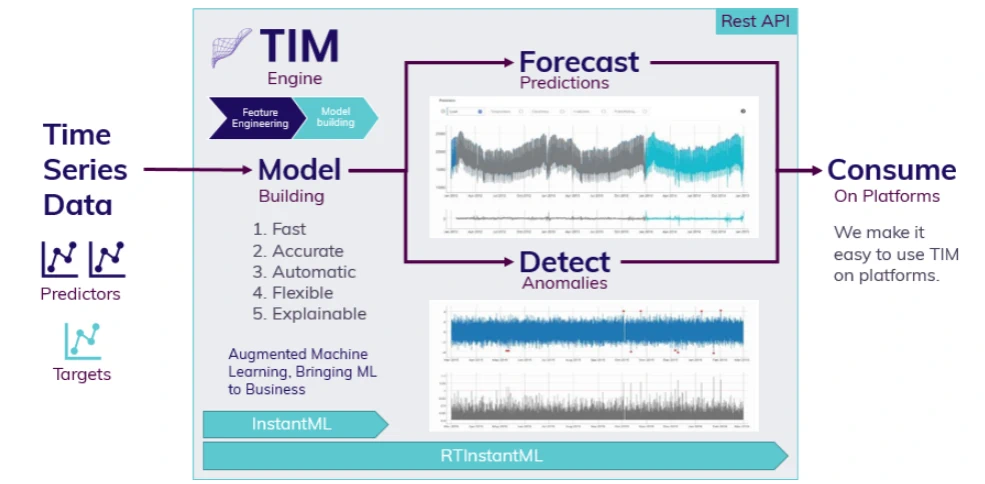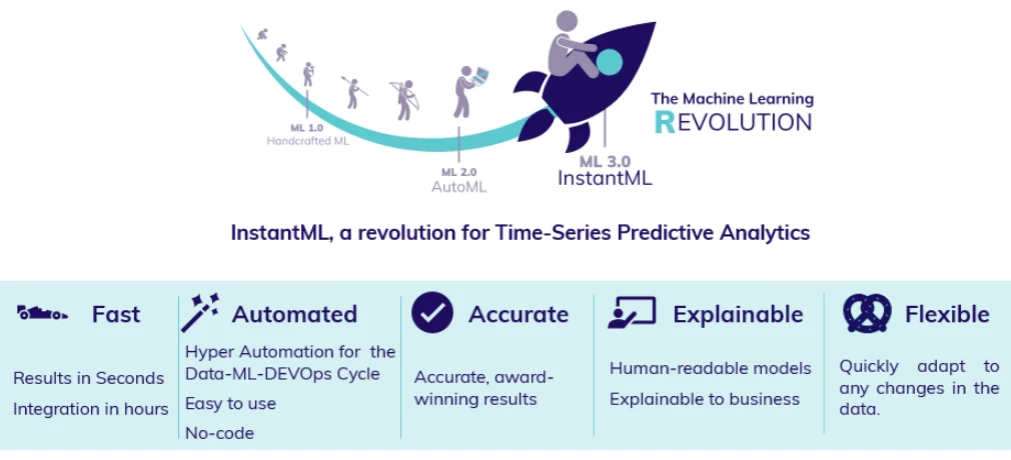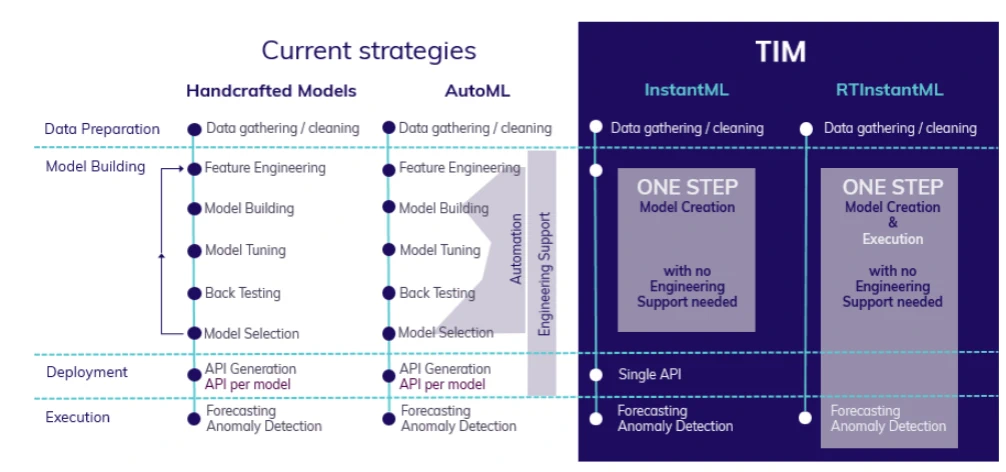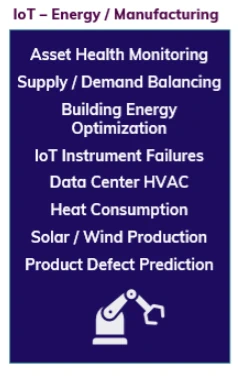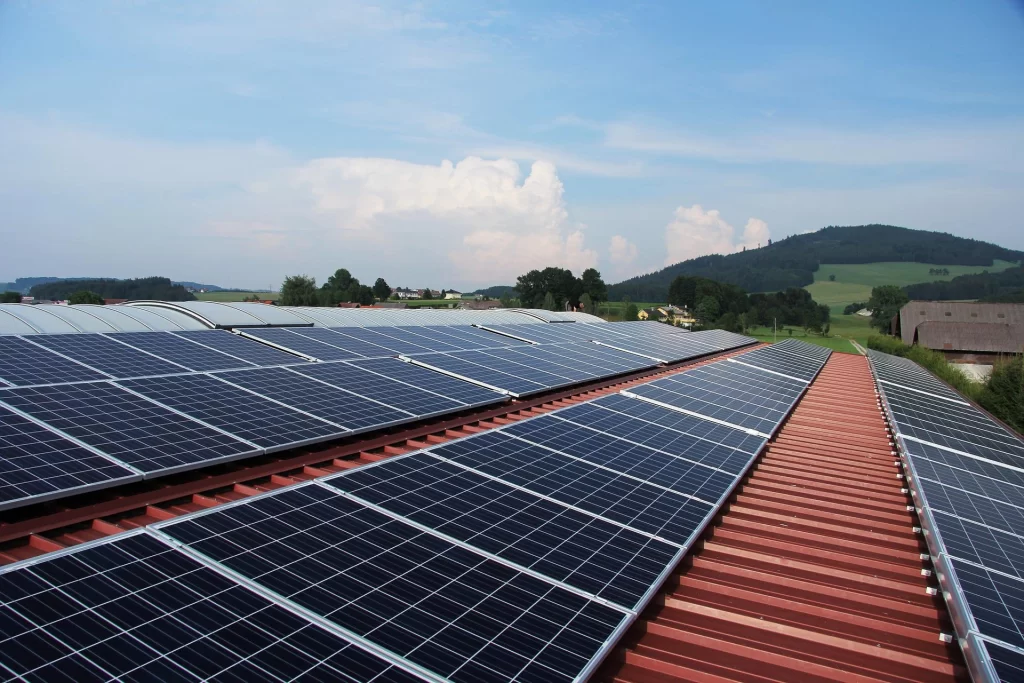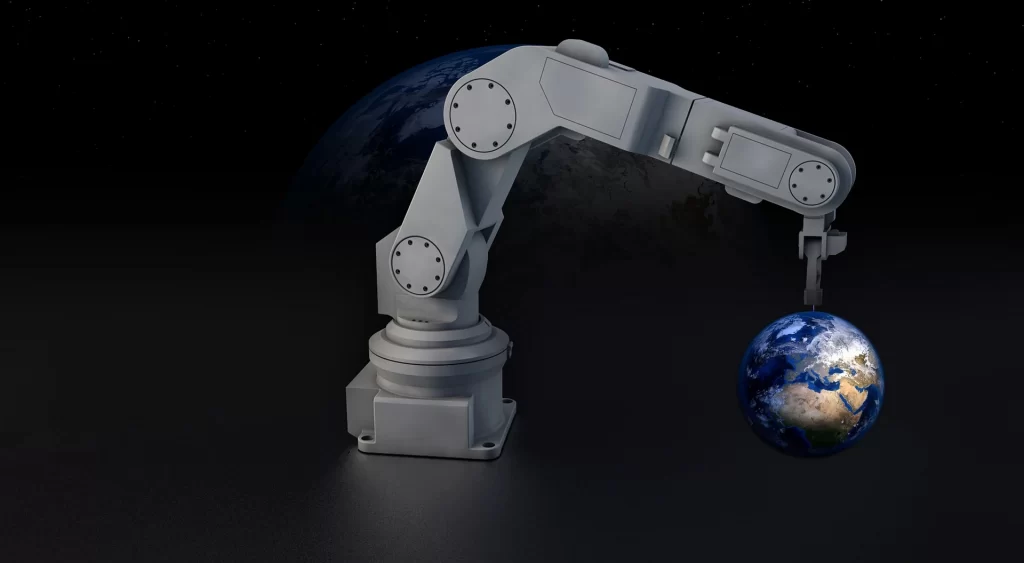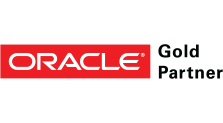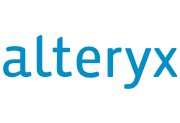InstantML rapid sustainability model building
Tangent Information Modeller (TIM) InstantML delivers data via API for BI tools such as Qlik to turn into business insights to act upon. Tangent Works’ TIM’s forecasting and anomaly detection capabilities have improved sustainability efforts, especially with renewable energy sources. TIM provides a fast, straightforward, and automated approach to getting the most out of your sustainability initiatives.
How does TIM InstantML work?
Tangent Information Modeller (TIM) utilises time-series data to predict the future (forecasting). With a prediction in place, TIM allows you to dig through historical data to find anomalies (anomaly detection) and to understand what’s causing those future changes through a root cause analysis. TIM is the quickest fully automated ML solution (InstantML) for building time series models and it’s also the most efficient, requiring little computing power.
TIM InstantML drives efficiency in the system and cuts down on wait times. The paradigm shift is moving away from the standard of spending two weeks to build a handcrafted model with an engineer. TIM can create and automate a model in less than a minute.
When dealing with sustainability, the ability to analyse and utilise historic data is essential. TIM allows you to look over different time periods. If you wanted to investigate the last three years’ worth of data, with TIM you can. TIM will identify whether there is a structural change in the data, providing you with the choice between using the most recent records or investigating why the changes in the data occurred.
COVID is a salient example of an event that has impacted forecasts. COVID was a binary event that initially Tangent Works only had a couple of months worth of training data on. However, they went back and made a model using the most recent data, which was more indicative of the future than anything that happened years previously.
TIM allows you to both explore data rapidly and reach a solution that can be quickly put into production.
TIM InstantML sustainability use cases for renewables
Solar panels
Tangent Works have scaled the forecasting of renewables. Doing so allows users to go down to a granular level and forecast the output of individual solar panels. This is essential, considering that the incremental cost of a model for each solar panel is so low.
As well as keeping a close eye on output, TIM can detect when panels start to fail and bring system issues to your attention in cases when panels generate less energy than expected. Both of these processes are developed through modelling.
Water and reducing waste
Tangent Works utilised TIM for the North Devon Biosphere project, providing the machine learning (ML) capabilities of TIM to infer water quality. TIM utilised data from a soft sensor and limited other sensors and inferred phosphate and ammonium levels. These indicators become essential when predicting flood risks.
Rainfall can also have a significant impact on production. For certain products on production lines, if it’s raining or significantly humid, there will be an increase in waste. When TIM’s target tier is waste you will discover the products not to manufacture in certain conditions. When the humidity is drier you would get the ‘green light’ but on days when it’s moister; TIM would point you towards manufacturing a different product that would generate less waste in that weather condition.
The transparency of the model in the above cases allowed not only discovery but the ability to uncover the key drivers in each situation. Some drivers are within an organisation’s control, some could be outside of its control. However, to achieve sustainability targets, TIM can run scenarios to plan the most efficient course of action across different situations. TIM will quickly inform you whether to run scenario A or B under a given condition.
Understand energy demands to hyperautomate and switch to renewable energy
If you can predict the presence of renewables on your site and you can predict how those renewables are going to generate power, you can then align demand with generation. You need to understand your demand and what drives it so that you can hyperautomate and make that demand happen.
There are low and high energy processes. A factory or energy company needs to align high energy processes with high generation. Using renewables would be an optimum solution because then you’re using all of the energy generated on-site rather than sending it out to the grid which can result in grid losses. As well as being economically efficient.
The TIM model enables root cause analysis and facilitates discovering why things are happening and what the most efficient plan of action could be. Sustainability targets can suffer when a variable’s driver is unknown. With an unknown driver, operational decisions and changes can jeopardise your sustainability initiatives without you knowing. TIM explains the situation and allows you to quickly hyperautomate an informed solution for sustainability.
Start your TIM InstantML sustainability energy revolution
Tangent Works and Differentia Consulting offer a data exploration workshop. Having your data in one place and reducing data silos will also allow you to find the best insights. Qlik Sense allows you to achieve this.


